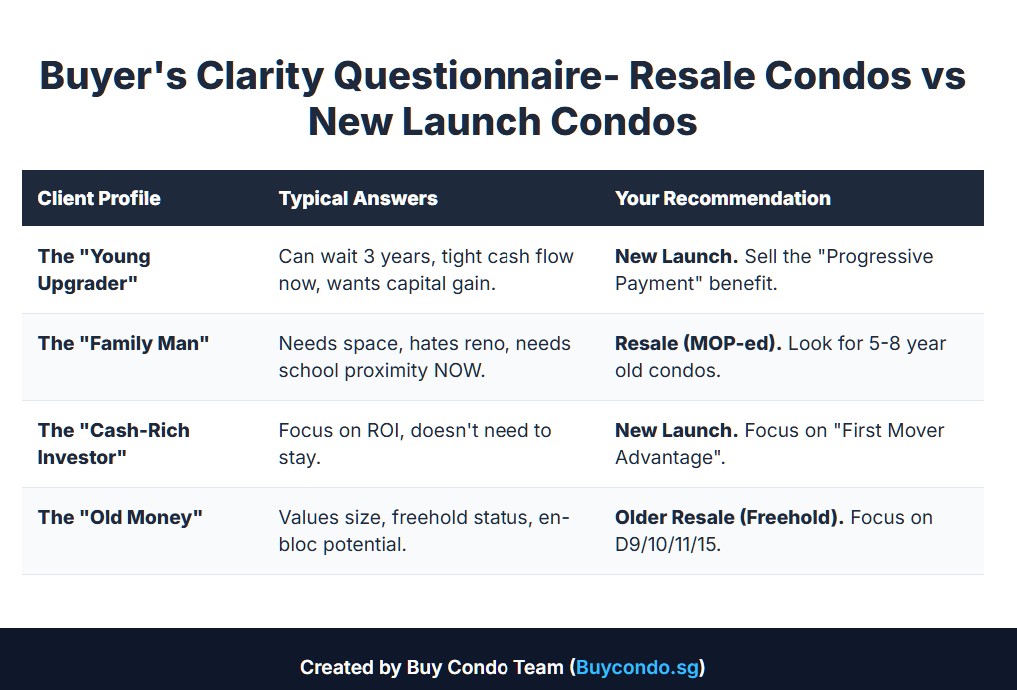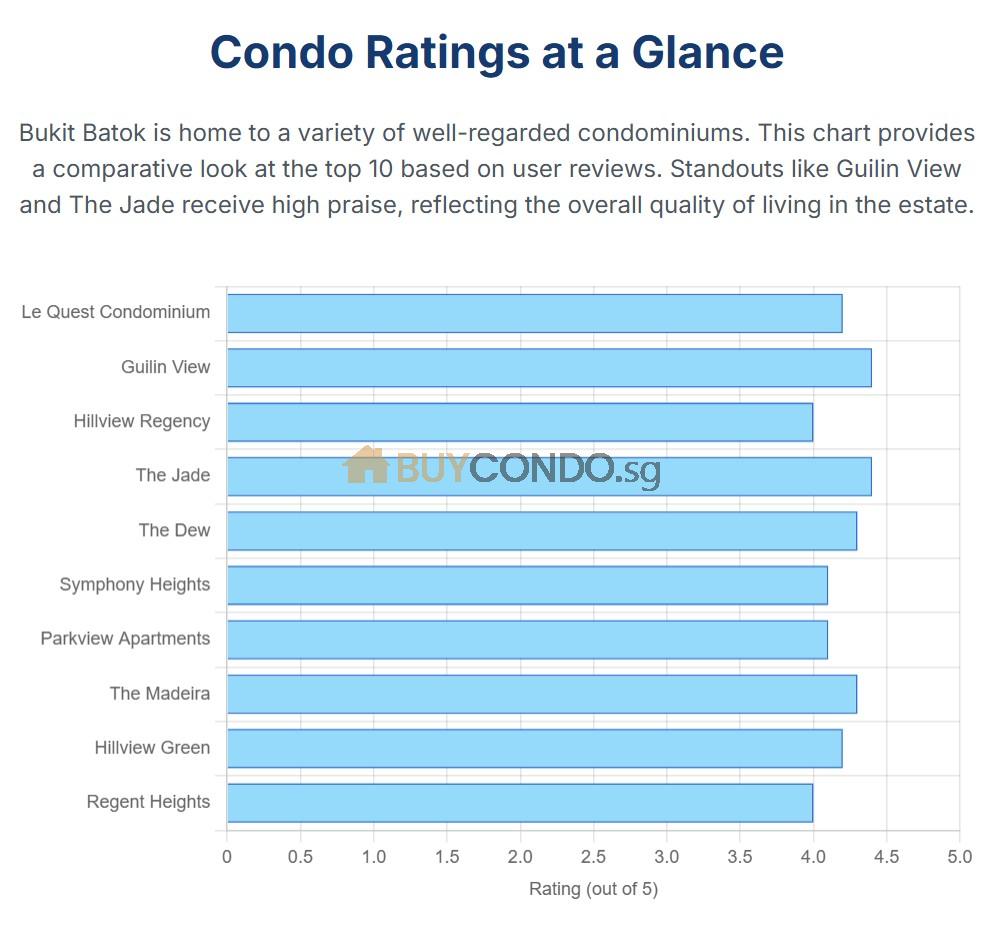Furniture allowance is it common for renting
When searching for a place to rent, tenants often consider various factors such as location, amenities, and lease terms. Furnishing the rental property is also an important aspect to consider. In this article, we explore the concept of a furniture allowance and its prevalence in the rental market. We also compare it to other furniture rental options available for tenants and landlords.
With a Condo Rental Market Shifts, we recently got some sophisticated tenant requesting of having up to $2,000/month worth of furniture allowance for an expat.
Our Long time landlord finds it unacceptable to require $48,000 worth of Furniture Allowance for the 24 months period. Not forgetting that there is diplomatic clauses and higher income tax to be payable by the landlord.
Instead of renting out at $10,000, the tenant has a budget of $12,000. This has not ended, there are also additional request of aircon servicing to be included in the contract.
The point to be drive across is there are possibilities of having a furniture allowance or one time furniture budget to buy, however this shall be mis-used.
Especially at this conjunction where high tenants are sort after we have to make sure we handle the situation well and having a balance both the tenant and the landlord in order to get things work out.
Work with BUYCONDO, Property Manager that put landlord’s interest first when renting our their properties.
Key Takeaways:
- A furniture allowance refers to the provision of funds by landlords to help tenants furnish their rental property.
- While it is not as common as renting fully furnished properties, some landlords offer furniture allowances as an incentive.
- Providing a furniture allowance can allow renters to choose their furniture and personalize their living space.
- Compared to traditional furniture rental options, a furniture allowance may save tenants and landlords money in the long run.
- Landlords should weigh the pros and cons of providing a furniture allowance, considering cost, maintenance, and the target tenant demographic.
Furniture Rental Trends in the Rental Market
In today’s rental market, furniture rental has emerged as a growing trend among landlords and tenants. Its convenience and flexibility have made it a popular choice for those seeking furnished rental properties or looking to provide furniture options for their tenants.
The Rise of Fully Furnished Properties
One of the notable trends in furniture rental is the increasing popularity of fully furnished properties. Tenants are showing a preference for rental homes or apartments that come with stylish and functional furniture included. This eliminates the hassle of purchasing and moving furniture, making it an attractive option for individuals or families looking for a hassle-free move.
“Renting a fully furnished property offers convenience and saves time and money. It allows tenants to enjoy a comfortable living space without the burden of buying or transporting furniture.” – Jane Smith, Tenant
Flexible Furniture Options
Another trend shaping the furniture rental market is the demand for flexible options. Renters are seeking customizable furniture arrangements that suit their lifestyle and personal taste. Furniture rental companies are responding to this demand by providing a wide range of furniture styles, allowing tenants to create their desired ambiance and make the space their own.
These flexible furniture options allow renters to create a space that reflects their personality and lifestyle, whether they prefer a contemporary, minimalist design or a cozy, rustic aesthetic.
Benefits of Furniture Rental Trends
| Benefits | (+) Pros | (-) Cons |
|---|---|---|
| Convenience | Eliminates the need to buy and transport furniture | May limit personalization options |
| Cost Savings | Affordable compared to buying new furniture | Can incur additional monthly rental fees |
| Flexibility | Allows for customization and adaptation to personal style | Potential limitations in selecting specific furniture pieces |
The current furniture rental trends in the rental market show a shift towards providing fully furnished properties and offering flexible furniture options. Tenants are seeking convenience, cost savings, and the ability to personalize their living spaces, driving the popularity of furniture rental among both renters and landlords.

Benefits of Furniture Allowance for Renters
A furniture allowance can bring various benefits for both landlords and tenants. Compared to traditional furniture rental options, providing a furniture allowance can save money, offer flexibility, and enhance the rental experience.
One of the primary advantages of a furniture allowance is cost savings. Renters can avoid the hefty costs of renting or buying furniture by using the allowance to furnish their rental property. This is particularly beneficial for long-term renters who may otherwise have to invest a significant amount of money in furniture that they may not need or want to keep in the long run.
By providing a furniture allowance, landlords can also save money. Instead of purchasing and maintaining furniture for their rental properties, landlords can include a furniture allowance in the rental agreement, allowing tenants to take care of their own furnishing needs.
Another benefit of a furniture allowance is the flexibility it offers to renters. With a furniture allowance, tenants have the freedom to choose furniture that matches their personal style and preferences. They can create a comfortable and inviting living space that feels like home, enhancing their overall satisfaction with the rental property.
Additionally, a furniture allowance can save tenants time and effort. They don’t have to go through the process of shopping for furniture, arranging delivery and assembly, and dealing with the logistics of furniture disposal when moving out. Instead, they can focus on settling into their new home and enjoying the benefits of a fully furnished space.
Providing a furniture allowance can be a win-win situation for both landlords and tenants. It can significantly reduce costs, offer flexibility, and enhance the rental experience by allowing tenants to create a personalized living space without the financial burdens of buying or renting furniture.
Insights into the Furniture Leasing Industry
When it comes to furnishing a rental property, many landlords opt for furniture leasing as a convenient and cost-effective solution. The furniture leasing industry offers a wide range of options, from basic furniture packages to high-end designer collections, catering to the diverse needs and preferences of both landlords and tenants.
“Landlords can effortlessly transform their rental properties into stylish and functional spaces, enhancing their potential for attracting and retaining tenants,” says Jane , a real estate agent who recommends their services.
Here is a comparison of the example offerings provided by Company A and Company B (Contact us to get our recommendations depending on your needs) :
| Company | Inventory | Leasing Plans | Value-Added Services |
|---|---|---|---|
| Company A | Wide range including modern, contemporary, and traditional styles | Flexible leasing plans with customizable packages | Delivery, set-up, and maintenance services |
| Company B | Fully furnished rental apartments | Fixed-term leasing with options for renewal | Move-in assistance and 24/7 customer support |
As the demand for furnished rental properties continues to rise, landlords need to stay updated on the latest trends and offerings in the furniture leasing industry.
Analysis of the Furniture Rental Market
In this section, we will comprehensively analyze the furniture rental market. We will explore the pros and cons of providing a furniture allowance compared to other rental strategies. Understanding the market landscape is crucial for both landlords and tenants when making informed decisions about furnishing rental properties.
Pros of Providing a Furniture Allowance
Offering a furniture allowance can have several benefits for landlords and tenants. Let’s take a look at some of the advantages:
- Flexibility: A furniture allowance allows tenants to choose their furniture, ensuring it suits their style and needs.
- Cost Savings: Tenants can find cost-effective furniture options and potentially save money in the long run.
- Higher Rental Demand: Furnished properties are often in higher demand, attracting a wider range of potential tenants.
- Attract Longer-Term Tenants: Providing a furniture allowance can attract tenants who are more likely to stay longer, reducing turnover and vacancy rates.
Cons of Providing a Furniture Allowance
While there are advantages, it’s important to consider the potential drawbacks of providing a furniture allowance:
- Higher Initial Costs: Furnishing a property can be costly, and landlords may need to invest a significant amount upfront.
- Maintenance and Replacement: Landlords are responsible for maintaining and replacing furniture, which can add to ongoing expenses.
- Damage and Wear: There is a risk of tenants damaging or causing excessive wear and tear to the furniture, resulting in additional costs for repairs or replacements.
- Limited Market Appeal: While some tenants prefer furnished properties, others may prefer unfurnished options, limiting the potential pool of interested renters.
In conclusion, providing a furniture allowance in rental properties has its advantages and disadvantages. It is essential for landlords to carefully evaluate the rental market and consider their budget and target tenant demographics before deciding on a furniture allowance. Striking a balance between cost-effectiveness and tenant preferences is key to maximizing returns on investment in the ever-evolving furniture rental market.
| Pros of Providing a Furniture Allowance | Cons of Providing a Furniture Allowance |
|---|---|
|
|
Exploring Furniture Rental Options for Renters
When it comes to renting a new home, furniture is often a major consideration for tenants. The good news is that there are various furniture rental options available that can make the process easier and more convenient. Whether you’re a student looking for a temporary rental or a professional seeking a fully furnished apartment, these options can cater to your specific needs.
“Renting a property with furniture included can be a game-changer for tenants. It saves time, effort, and money, allowing them to move in seamlessly without the hassle of buying or moving furniture.”
One popular option is to choose a rental property that already includes furniture. Many landlords now offer fully furnished homes or apartments, providing tenants with everything they need to live comfortably without the burden of purchasing and transporting their own furniture.
Table:
| Advantages of Choosing Rental Properties with Furniture Included | Benefits for Tenants | Benefits for Landlords |
|---|---|---|
| 1. Convenience | 1. No need to purchase or move furniture | 1. Attract a larger pool of potential tenants |
| 2. Cost Savings | 2. Avoid the expenses of buying new furniture | 2. Higher rental rates and shorter vacancy periods |
| 3. Flexibility | 3. Option to extend or end the lease without worrying about furniture | 3. Reduced maintenance and replacement costs |
For those who prefer a more tailored approach, another option is to rent furniture on a short-term basis. This allows tenants to choose specific pieces that suit their style and needs, creating a personalized living space without the commitment of purchasing furniture.
“Renting furniture on a short-term basis gives tenants the flexibility to customize their living space while avoiding the long-term financial commitment associated with buying furniture.”
Table:
| Advantages of Renting Furniture on a Short-Term Basis | Benefits for Tenants | Benefits for Landlords |
|---|---|---|
| 1. Flexibility | 1. Choose specific pieces according to personal style | 1. Easily replace or update furniture between tenants |
| 2. Affordability | 2. Pay for furniture only for the duration of the lease | 2. Lower upfront investment in furnishing the property |
| 3. Convenience | 3. No need to worry about selling or moving furniture | 3. Increased perceived value of the rental property |
Ultimately, the choice between renting a property with furniture included or renting furniture separately depends on personal preferences, budget, and the duration of the rental. Both options offer distinct benefits and can cater to different tenant needs.
Whether you’re a tenant looking for a hassle-free move or a landlord aiming to attract tenants with desirable features, exploring furniture rental options can provide you with the flexibility and convenience you’re looking for.
Factors to Consider when Providing a Furniture Allowance
When landlords decide to provide a furniture allowance for their rental properties, several important factors must be considered. Not only does this decision have financial implications, but it also impacts the overall rental experience for both landlords and tenants. By evaluating these key factors, landlords can make an informed decision about providing a furniture allowance and how it may affect rental property expenses.
1. Budget and Financial Considerations
Providing a furniture allowance involves upfront costs for purchasing furniture or reimbursing tenants for their furniture purchases. Landlords must assess their budget and evaluate how much they are willing to invest in furnishing the rental property. It’s also essential to consider the long-term maintenance and replacement costs associated with furniture.
Quote: “Landlords should conduct a cost-benefit analysis to determine if providing a furniture allowance aligns with their financial goals and capabilities.” – John, Financial Advisor
2. Tenant Demographics and Market Demand
The area’s tenant demographics and market demand should be considered when deciding whether to provide a furniture allowance. If the rental property is located in an area with a high demand for furnished rentals or a specific target demographic that prefers furnished accommodations, offering a furniture allowance may attract a larger pool of potential tenants and enhance the property’s marketability.
3. Rental Agreement Terms and Conditions
Landlords should carefully review and update their rental agreements to include clear terms and conditions regarding the furniture allowance. It’s important to specify who is responsible for maintaining and repairing the furniture and any restrictions on altering or removing the provided furniture. Including these details in the rental agreement helps avoid disputes and misunderstandings between landlords and tenants.
4. Long-term Rental Property Strategy
Consider the overall rental property strategy when deciding whether to provide a furniture allowance. If the goal is to attract long-term tenants committed to staying for an extended period, providing a furnished rental with a furniture allowance may be a strategic choice. However, if the target market consists of short-term renters, offering unfurnished rentals or exploring other furniture rental options might be more cost-effective.
5. Quality and Durability of Furniture
Investing in durable and high-quality furniture is crucial when providing a furniture allowance. Poor-quality furniture may not withstand the wear and tear of multiple tenants and may require frequent repairs or replacements, resulting in additional expenses. By selecting sturdy and long-lasting furniture, landlords can minimize maintenance costs.
6. Insurance Coverage
Landlords should review their insurance coverage to ensure that providing a furniture allowance does not impact their liability protection. It’s essential to consult with an insurance agent to understand the coverage limitations and determine if any additional insurance is required.
| Factor | Considerations |
|---|---|
| Budget and Financial Considerations | Evaluate upfront costs, ongoing maintenance expenses, and replacement costs. |
| Tenant Demographics and Market Demand | Analyze the demand for furnished rentals in the area and the target tenant demographic. |
| Rental Agreement Terms and Conditions | Clearly define responsibilities and restrictions regarding the furniture allowance in the rental agreement. |
| Long-term Rental Property Strategy | Align the decision with the overall rental property strategy and target market. |
| Quality and Durability of Furniture | Invest in sturdy and long-lasting furniture to minimize maintenance costs. |
| Insurance Coverage | Review insurance policies to ensure adequate coverage for the furniture provided. |
By considering these factors, landlords can make informed decisions regarding providing a furniture allowance. It’s essential to weigh the financial implications, market demand, and long-term rental property strategy to ensure that the decision aligns with the goals and needs of both landlords and tenants.
Implications of Furniture Allowance on Rental Agreements
When including a furniture allowance in rental agreements, both landlords and tenants need to consider the legal implications involved. This section explores the rights and responsibilities of both parties and highlights the key legal considerations to keep in mind.
For landlords, offering a furniture allowance can be a valuable perk to attract and retain tenants. However, it is crucial to clearly outline the terms and conditions of the furniture allowance in the rental agreement to avoid misunderstandings or disputes. Landlords should specify the allowance amount, the type and condition of the furniture to be provided, and any limitations or restrictions on its use.
Tenants, on the other hand, should carefully review the terms of the furniture allowance before signing the rental agreement. They should ensure that the allowance meets their needs and preferences and that they understand their obligations and responsibilities regarding the provided furniture. Tenants should also be aware of any potential charges or penalties associated with the furniture, such as damages or excessive wear and tear.
Aside from the specific furniture allowance terms, landlords and tenants should also be mindful of the broader legal considerations. These may include local laws and regulations related to rental properties, consumer protection laws, and insurance requirements. Both parties should seek legal advice or consult relevant resources to ensure compliance with the applicable laws and regulations.
Rights and Responsibilities of Landlords and Tenants
Providing a furniture allowance in a rental agreement comes with certain rights and responsibilities for both landlords and tenants. Here are a few important points to consider:
- Landlords have the right to expect the furniture to be used responsibly and maintained in good condition by the tenants.
- Tenants are responsible for using the furniture as intended, reporting any damages or issues promptly, and taking reasonable care to prevent damage.
- Landlords may have the right to inspect the furniture periodically to ensure its proper maintenance.
- Tenants can expect the furniture allowance to be provided as agreed upon in the rental agreement.
- Landlords are responsible for repairing or replacing furniture damaged due to normal wear and tear.
- Tenants may be responsible for covering the costs of repairing or replacing furniture damaged due to negligence or misuse.
Landlords and tenants can maintain a positive and mutually beneficial rental experience by understanding and respecting these rights and responsibilities.
Conclusion
After exploring the concept of furniture allowance in the rental market, it is evident that providing such an allowance is not as common as one might think. Landlords have various options when it comes to furnishing rental properties, and the decision to offer a furniture allowance should be carefully considered.
When deciding whether to provide a furniture allowance, landlords must weigh the pros and cons. On one hand, offering a furniture allowance can attract tenants and make the property more desirable. It eliminates the need for tenants to purchase furniture or go through the process of renting it separately. This can save tenants time and money in the long run.
On the other hand, providing a furniture allowance comes with its considerations. Landlords must evaluate the additional costs involved in furnishing the property and maintaining the furniture over time. They also need to anticipate the potential risks and damages that may occur to the furniture during the rental period. It’s essential to balance the benefits and expenses of offering a furniture allowance.
Ultimately, the decision to provide a furniture allowance depends on the specific circumstances of each rental property and the preferences of both landlords and tenants. It is crucial for landlords to carefully assess their target market, budget, and the overall rental landscape before making a final decision. By considering all factors involved, landlords can make an informed choice that aligns with their goals and maximizes the potential for a successful rental experience.
FAQ : Furniture allowance is it common for renting
Is providing a furniture allowance common for renting?
Yes, providing a furniture allowance is a common perk for renters. Landlords may offer a furniture allowance as part of the rental agreement to attract tenants and give them the flexibility to furnish the property according to their preferences.
What are the trends in furniture rental in the rental market?
Currently, renting fully furnished properties is a growing trend in the rental market. Many renters prefer the convenience of moving into a furnished space without worrying about purchasing furniture. Additionally, there is an increasing demand for flexible furniture options, such as short-term rental arrangements.
What are the benefits of a furniture allowance for renters?
Providing a furniture allowance can have several benefits for renters. It allows them to save money on purchasing furniture outright. Compared to traditional furniture rental options, a furniture allowance may be a more cost-effective solution in the long run. It also allows tenants to choose furniture that aligns with their style and preferences.
What insights can you provide into the furniture leasing industry?
The furniture leasing industry offers a range of options for both landlords and tenants. There are popular furniture rental companies that provide various furniture packages and styles to suit different needs. Renters can explore these options to find the best fit for their desired aesthetic and budget.
How does providing a furniture allowance compare to other rental strategies?
A furniture allowance has its advantages and disadvantages compared to other rental strategies. On one hand, it can save the landlord money in the long term by not having to purchase and maintain furniture. On the other hand, it may require a more significant upfront investment or ongoing expenses. Landlords need to consider both the financial implications and the preferences of potential tenants when deciding on a rental strategy.
What are the different furniture rental options available to renters?
Renters have the option to choose between furnished and unfurnished properties. Furnished properties come with furniture included, providing convenience and cost savings. Unfurnished properties allow tenants to furnish the space according to their preferences. Furniture rental companies also offer short-term rental options for those who prefer flexibility.
What factors should landlords consider when providing a furniture allowance?
Landlords should consider the financial implications and potential costs of providing a furniture allowance. This includes the upfront investment, ongoing maintenance, and potential replacement costs. It’s also important to consider the target market and the type of tenants likely to benefit from a furniture allowance.
What are the legal considerations for including a furniture allowance in rental agreements?
Including a furniture allowance in rental agreements may have legal implications. It’s important for landlords to clearly outline the terms of the allowance, including any responsibilities for maintaining or replacing the furniture. Tenants should also understand their rights and obligations when receiving a furniture allowance in their rental agreement.
What is the conclusion on furniture allowance in renting?
To conclude, furniture allowance is a common perk for renters, providing flexibility and cost savings. However, there are pros and cons to consider before deciding whether to give a furniture allowance.
Speak to the BUYCONDO Team. to weigh the financial implications and tenant preferences to make an informed decision.














